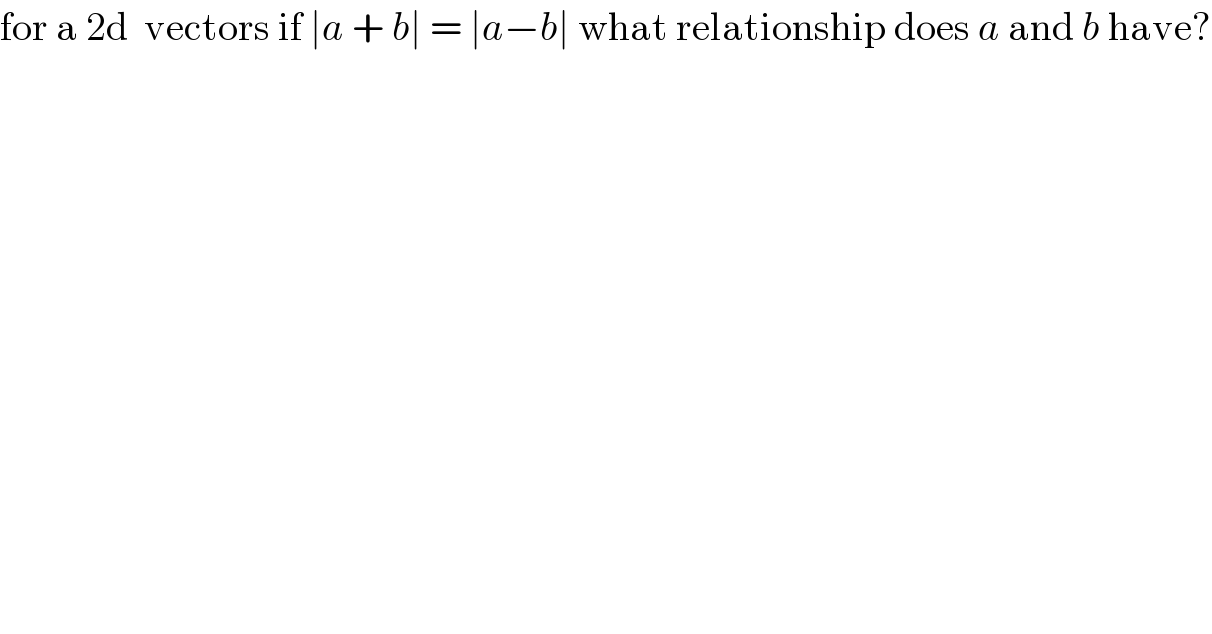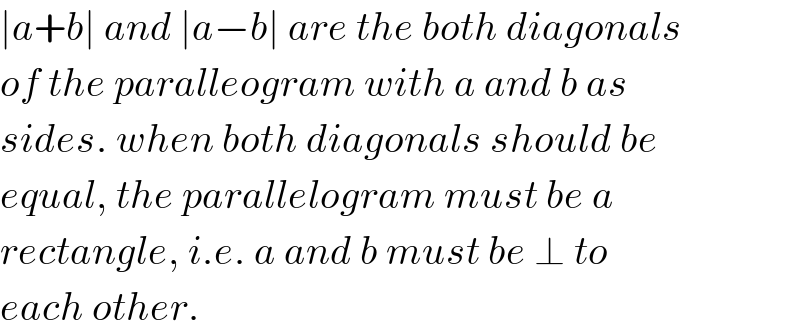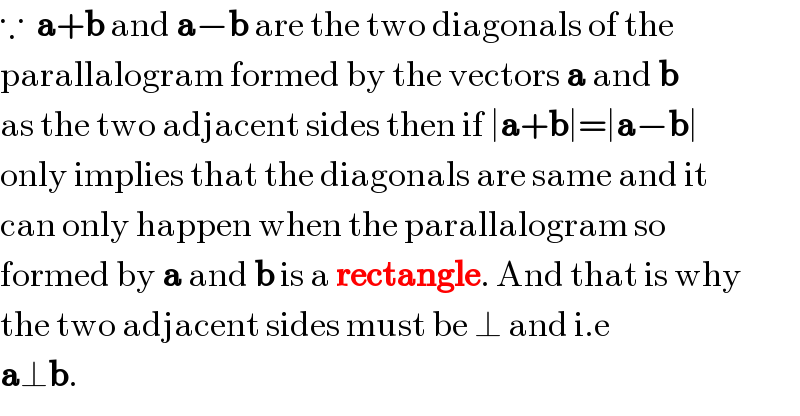
Question and Answers Forum
Question Number 92465 by Rio Michael last updated on 07/May/20

Commented by mr W last updated on 07/May/20

Commented by Rio Michael last updated on 07/May/20

Commented by mr W last updated on 07/May/20

Commented by mr W last updated on 13/May/20

Commented by Rio Michael last updated on 07/May/20

Commented by Prithwish Sen 1 last updated on 07/May/20

Commented by Rio Michael last updated on 07/May/20

Answered by behi83417@gmail.com last updated on 07/May/20
![∣a+b∣=(√(a^2 +b^2 −2abcosθ)) ∣a−b∣=(√(a^2 +b^2 +2abcosθ)) [θ=angle between a and b] ∣a+b∣=∣a−b∣⇒ a^2 +b^2 −2abcosθ=a^2 +b^2 +2abcosθ ⇒4abcosθ=0⇒ { ((a=0 (or))),((b=0 (or))),((cosθ=0⇒θ=(π/2)⇒a⊥b)) :}](Q92523.png)
